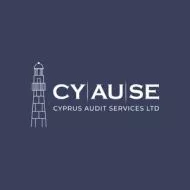- with readers working within the Media & Information industries
- within Wealth Management, International Law and Immigration topic(s)
- with Finance and Tax Executives
- in United Kingdom
1. Own Funds Calculation
Own Funds Calculation
As expected, the most common errors take place with the own funds calculation as indicated below:
A. Management Profit / Loss vs Audited Profit / Loss
There seems to be a confusion as to which profits or losses are eligible during the own funds calculations. The below illustration aims to simplify the process:
a) Latest Audited FS show Losses whilst Management Accounts reflect Interim Profits --> Audited Losses will be used
b) Latest Audited FS show Profits whilst Management Accounts reflect Profits --> Audited Profits will be used
c) Latest Audited FS show Profits whilst Management Accounts reflect Losses --> Management Losses will be used
Reference - Article 26(2) of CRR
Rule of Thump Accounting "Prudence Principle"
Be slow in taking profits but provide in full for foreseeable losses. CySEC requires the Tier 1 Own Funds calculation to be prudent hence take into consideration losses whenever possible. As per Circulars' C305 last paragraph "It should be noted that CySEC's permission is not needed for losses, whether interim or final. Losses must be deducted in full from own funds as soon as they are incurred."
For more details, refer to Circulars' C305
B. What happens when the Turnover is Qualified in the Auditors Report?
In the scenario that the Audited FS of a Company shows a Profit but with Qualifications by the Auditors affecting this profit (for which ever reason), then such items for which the auditors have expressed an opinion should be removed and the new revised profit figure be be used. This is because the qualified items contributing to the profit must be considered as unverified and thus cannot be part of Common Equity Tier 1 capital.
Reference: -Circular C305
C. Management wants to use Interim Profits based on Management Accounts
In the event that management wants to include Interim Profits in its Own Funds Calculations, despite Audited Losses then its Interim Results should be Audited by an Independent, licensed Audit & Assurance firm and be approved by CySEC before they are used.
Given the tight deadlines of COREP reporting, the above approach is not practical and is it rarely used.
References - CySEC Circulars C305 & European Banking Authority
Note: Circular 305 analyses extensively such scenario.
D. "Other Reserves" calculations
Other Reserves (as per the statement of ) should be reserves available to the CIF. If such reserves are Refundable or Payable Back to the persons who contributed them, they should be Deducted from the Calculations of Own Funds.
Commonly, "Other Reserves" may include Non-Fefundable contributions from Shareholders or other Connected Parties. Non refundable, as the word suggests, means that these contributions have been given to the CIF and they belong to the CIF without any constraint. These reserves should not be deducted from the Calculations of Own Funds.
Reference: -Article 26(1) of the CRR
E. Investors Compensation Fund (ICF) Contribution
Should always be excluded from the Own Funds calculation (Common Equity Tier 1 Capital).
Reference: - Circular C162
F. Treatment of the Additional Cash Buffer of Investors Compensation fund ('ICF') in the Own Funds Calculation
The new deduction from the own funds calculation of 3%o serving as an Additional Cash Buffer of the Investors Compensation fund, as small as it may be, should be Deducted from the Own Funds Calculation and should agree with the funds deposited in a separate bank account. This cash buffer should be used in case there is need for an extraordinary contribution and should not be used for any other purpose. In other words, the CIF should be able to show this buffer in its bank account at all times.
Reference: - Circular 334
2. Directors and Shareholders Exposures
Forms 144-14-08.2 and 144-14-08.3
When completing these forms, we should also report the exposures of the Directors and Shareholders Connected Parties as defined in Article 4(39) of the CRR. From experience, most Companies tend to omit this point.
Best practice Guidelines - by CySEC
CySEC has identified that a number of CIFs adopted the following best practices:
- The Internal or External Auditor or another independent person reviews the CIF's regulatory reporting to give assurance on its accuracy and completeness;
- Reconciling the regulatory reporting with the management accounts and data from other internal systems;
- Companies are encouraged to go as far as creating automated systems for the calculation of own funds, capital adequacy ratio and monitoring of large exposures, where possible and appropriate to the nature and complexity of their activities.
For example, a number of CIFs have integrated their systems and developed/ acquired software applications to automatically calculate the own funds, capital adequacy ratio and large exposures.
IMPORTANT:
- Always submit the COREP forms at least 3-4 days before the deadline. This will ensure that if any typo errors (wrong date format, etc) has been used it will allow you sufficient time to resubmit it.
- Values are reported in thousands NOT in absolute numbers
- Always download the COREP reports from the portal as they change frequently
- Always read the latest circulars and announcements before completing your COREP or Statistical reports. Use a checklist (request ours kt@cyprusaccountants.com.cy).
- € currency is reported as EUR and the remaining rest as as follows (USD, GBP,RUB)
- Fixed Overheads Expenditure - do not forget to fill in the information of the company (last page of form 144-14-0.61)
- Reporting currency should be excluded from the market risk calculation
- Figures used should be consistent across all reporting (COREP, Statistical Reporting, Management Accounts, ICAAP) and so on. Review the Trial Balance used before processing it for corresponding reporting.
About Us
CYAUSE Audit Services has extensive experience in the insurance industry has helped tens of insurance brokers and agents register and get licensed by the local Cyprus regulator granting them passporting access to the rest of the European Union.
CYAUSE Audit Services is an Audit & Assurance firm with offices in Cyprus and the UAE. During 2015 we have been awarded by I.C.P.A.C and the A.C.C.A (local and international association of Chartered Certified Accountants) for the Quality of our Audit Services and our Office's Procedures.
Being a Truly International Audit & Assurance firm, we have associates from all over the world and we are constantly looking for new associates to expand our network further. At present, CYAUSE Audit Services operates internationally through its membership with BKR International amongst the largest American associations in the world, Accace Circle, a co-created business community of like-minded BPO providers and advisors who deliver outstanding services with elevated customer experience. Our network covers almost 40 jurisdictions with over 2,000 professionals, it supports more than 10,000 customers, mostly mid-size and international Fortune 500 companies from various sectors, and processes at least 170,000 payslips globally.
CYAUSE Audit Services Ltd is also a member of BKR International one of the biggest US Accounting Associations of the word and the 3E Accounting Network, an international accounting network which originates from Hong Kong and has more than 80 members from all over the world.
Learn More about Cyprus Corporate Environment
Information about CYAUSE Audit Services and the Cyprus Corporate & Tax System can be obtained from our Website or our YouTube channel which provides valuable information about the Corporate & Tax Environment of Cyprus.
The content of this article is intended to provide a general guide to the subject matter. Specialist advice should be sought about your specific circumstances.


